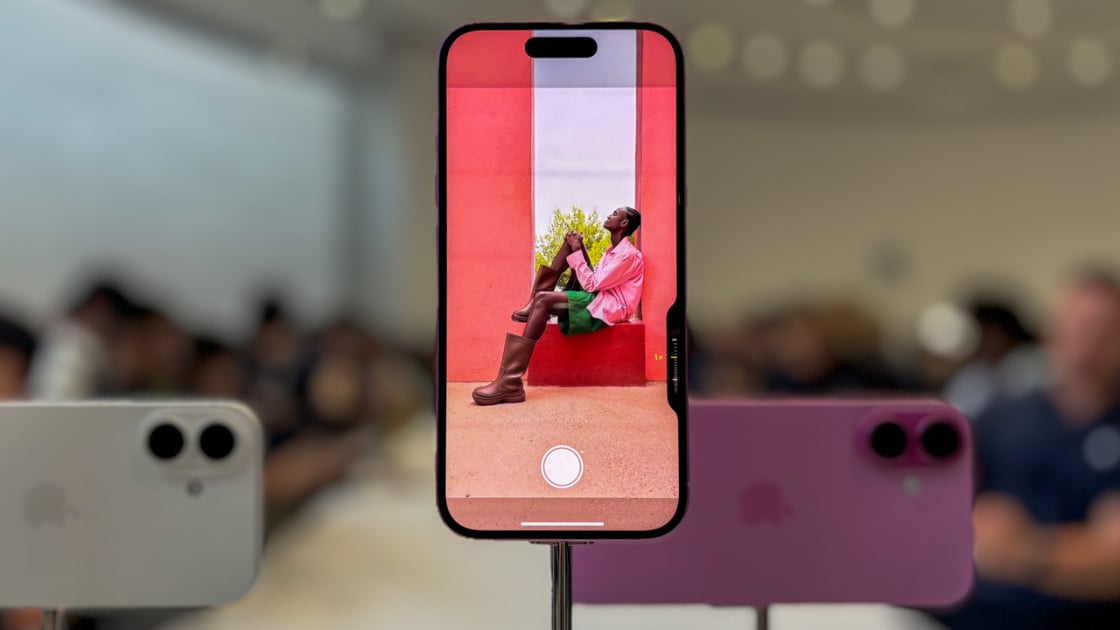
The Apple iPhone 16 and 16 Plus mostly carry over their 6.1-inch and 6.7-inch screens from the iPhone 15 and 15 Plus. That’s a problem. Why? Because $200 Android phones are outgunning the new iPhones on several overdue display features. Most modern phone screens are fantastic. Flagship handsets like the Apple iPhone 16 Pro, Google Pixel 9 Pro, and Samsung Galaxy S24 Ultra use high-tech panels that make using them day in and day out a great experience. One of those features is the variable refresh rate. Screens that support variable refresh rates can slow down or speed up their refresh rate depending on factors like which app is running or what task is at hand. The slower the speed, the more energy you conserve; the faster the speed, the smoother the experience when moving between apps or screens.
(Credit: Angela Moscaritolo)
For a long time, smartphone screens mirrored the basic refresh rate of television sets, which is 60Hz. Over time, some moved to 90Hz or 120Hz, but those screens sometimes used more power and depleted batteries more quickly. Variable refresh rate screens can instantly switch from a low-power rate of 1Hz to 120Hz or higher. This allows phones to balance power consumption and the experience of using it for certain apps or activities. Samsung’s Galaxy Note 20 was among the first to adopt a variable refresh rate display back in 2020. Since then, nearly all flagship-level phones have adopted variable refresh rate screens—including Apple. The iPhone Pro models include what Apple calls ProMotion displays that are able to vary their refresh rate. In fact, many midrange phones costing between $300 and $500, like the Google Pixel 8a, have adopted variable refresh rate screens. Moreover, some $200 phones support screens with refresh rates of 90Hz or 120Hz; for example, the Samsung Galaxy A15 5G has a 90Hz screen, and the Motorola Moto G 5G has a 120Hz panel.
The $199 Samsung Galaxy A15 5G has a 90Hz display (Credit: Iyaz Akhtar)
It’s a total head-scratcher, then, that the $800 iPhone 16, arguably the company’s most important mainstream model, is stuck with a static 60Hz screen. True, variable refresh rate displays add cost. One would argue, though, that if a $200 Motorola phone can support a fast 120Hz screen, so can the iPhone 16. Why is this a big deal? The overall experience, for one. Faster screens have smoother scrolling performance. The other big one is the always-on display. The Pro iPhone models support an always-on display feature, which allows them to show your wallpaper, several widgets such as the clock, and even your unread notifications. It’s able to do this without draining the battery because the screen is refreshing only once per second rather than 60 or 120 times per second. This feature makes it easy to glean information quickly without having to tap or otherwise wake up your phone. It’s a quality of life thing.
Recommended by Our Editors
(Credit: Angela Moscaritolo)
I get that Apple needs a point of differentiation between the standard iPhone 16 models and the more costly iPhone 16 Pro models. In this case, the larger screen sizes, pro-grade processor, triple-camera system, and advanced multimedia capture capabilities are more than enough. Apple needs to update the base iPhone screen to a variable refresh rate display to offer the same performance and features that owners of inexpensive Android phones have enjoyed for years. It’s past time.
Apple Event 2024 Recap
Like What You’re Reading?
Sign up for Fully Mobilized newsletter to get our top mobile tech stories delivered right to your inbox.
This newsletter may contain advertising, deals, or affiliate links. Subscribing to a newsletter indicates your consent to our Terms of Use and Privacy Policy. You may unsubscribe from the newsletters at any time.
About Eric Zeman
Managing Editor, Consumer Electronics
I’m PCMag’s managing editor for consumer electronics content, overseeing an experienced team of reviewers and product testers. I’ve been covering tech for more than 22 years. Prior to PCMag, I worked at outlets such as Android Authority, Fortune, InformationWeek, and Phonescoop.
Read Eric’s full bio
Read the latest from Eric Zeman






